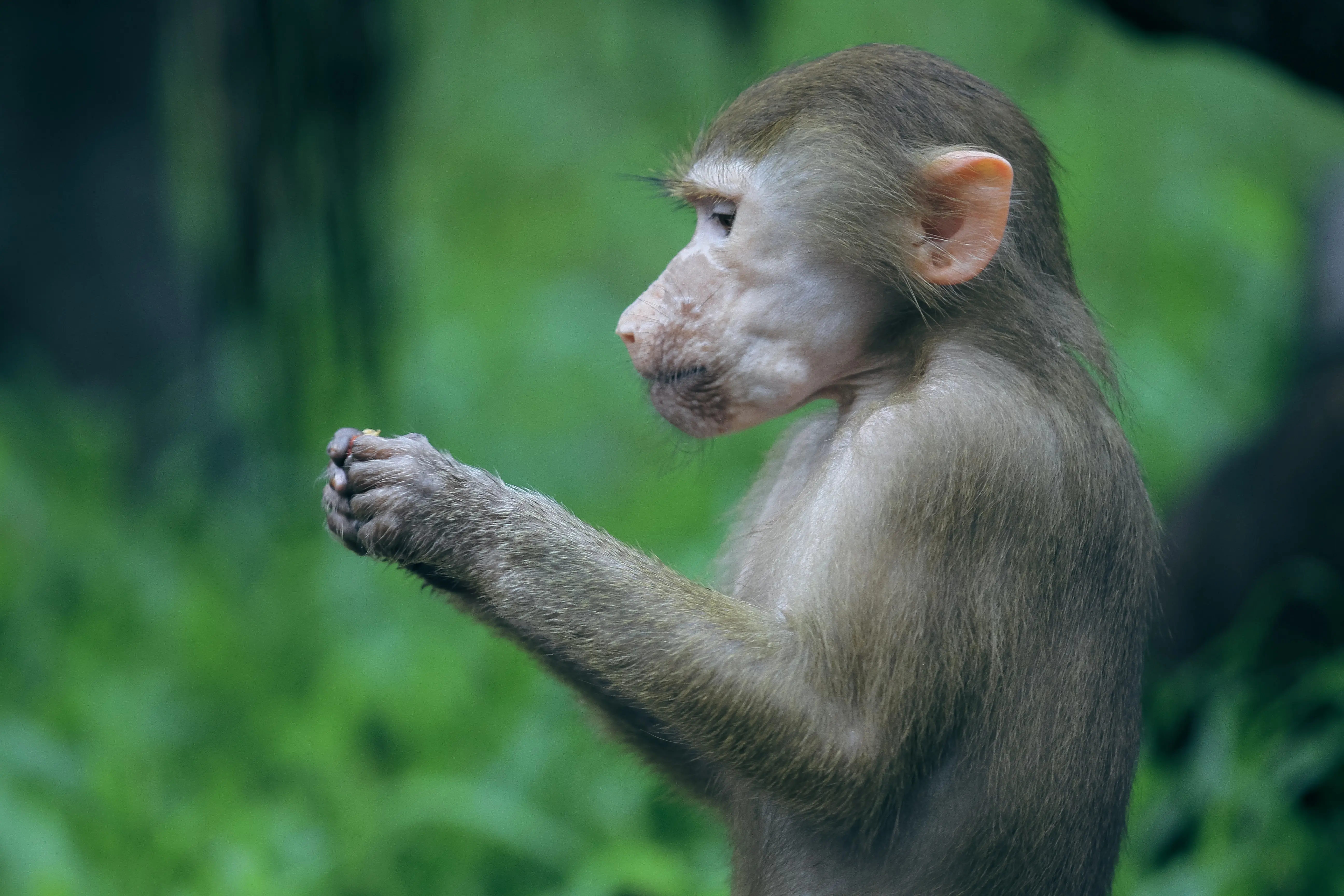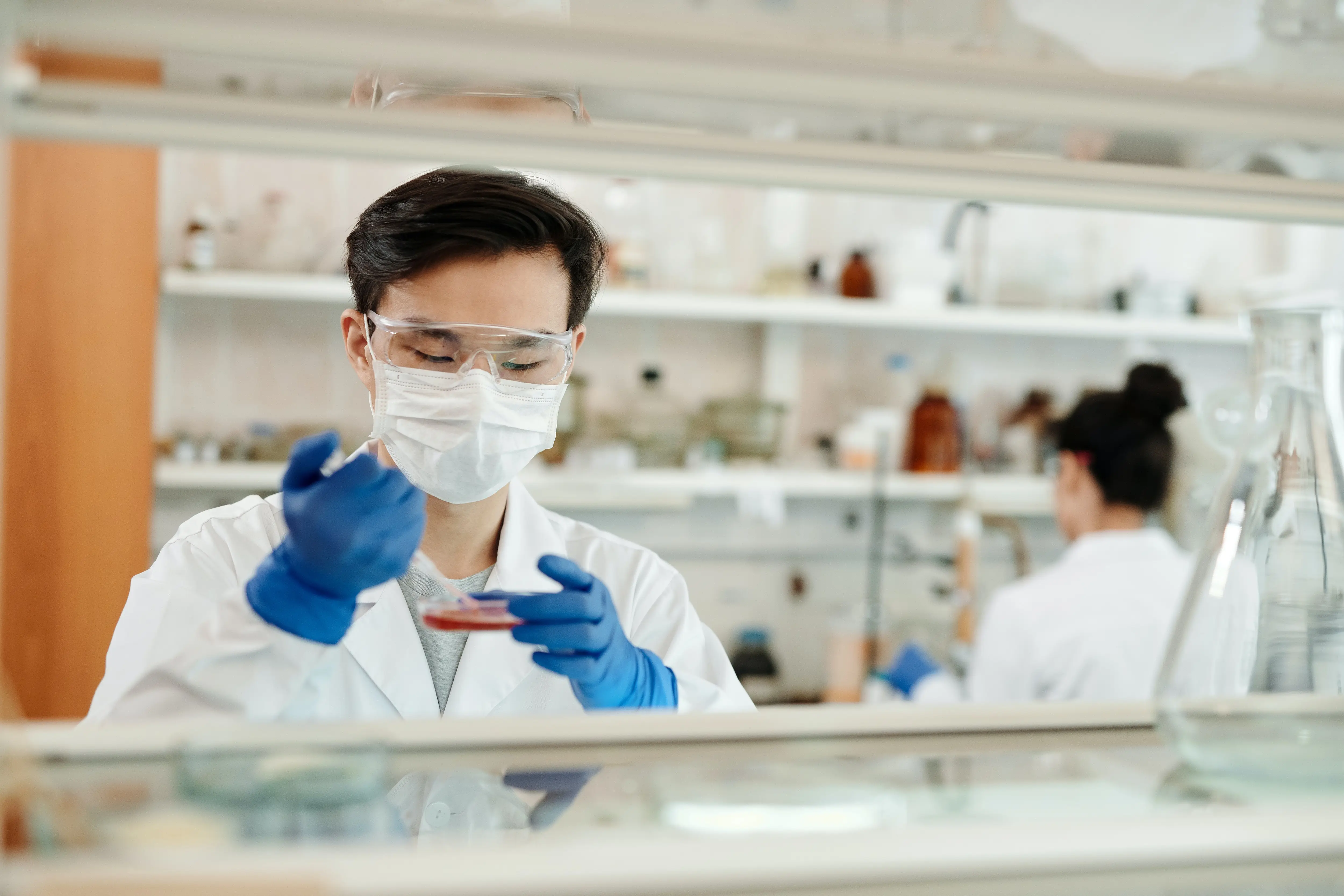Animal testing is a term used to describe procedures used on animals to see the efficacy of drugs that are earmarked to be used on humans. Disease research, drug testing, and a further comprehension of human biology are various examples of the uses of animal testing. These tests help determine human health risks of drugs, evaluating the efficacy of new medicinal products (Sántha, 444). Animals are necessary sacrifices in research since the information provided through their testing brings an understanding of the diseases that affect humans and other living creatures. Information is generated through animal testing that could not otherwise be gleaned and the practice has saved human lives on several occasions. Animal testing is necessary to develop new medical treatments, determine the efficacy of medications, and test the safety of products (Sántha, 444). However, the continuity of animal testing hangs in the balance due to rising calls to have it replaced for ethical reasons.
When developing important medicine or surgical methods that aim to save human lives, it is more ethical to test on animals than on humans to let a person die. Human life is much more valuable than that of an animal due to the ability to think and reason. Furthermore, Testing on one animal could potentially save millions of human lives for years to come. Certainly, animal testing is the more ethical alternative to letting humans today, and in the future, die. Animal testing is ethical because it is for the greatest good for the greatest number of people, which is Jeremy Bentham’s very definition of what goes into ethical decision-making in his utilitarian principle (Maduabuchi, et al., Par 7). It is a mechanism of giving human pleasure and happiness while denying the same to animals who are considered less valuable before mankind (Wang et al., 113). Despite the reasons against it such as cruelty to animals and unconcern about the general ecosystem, animal testing has greater moral importance.
Most successful medical research has depended on animal testing. The involvement of animals as surrogates in the research has led to discoveries of cures to several diseases which could not be done through direct human tests due to the fear of losing more precious lives (Kabene et al. Par 2). The testing has improved the human understanding of anatomy while securing the safety of certain products used in the medical field. Since the success of the drugs upon tests shows how effective they could be on humans, animal testing becomes an important approach to finding solutions to human problems. Several medical discoveries have been made through animal testing making it a preferred way of conducting medical research for the benefit of human beings (Kabene et al. Par 3). As a result, animal testing should remain in play to help solve medical problems that would be difficult to settle using persons owing to the roles human beings play in the ecosystem making them more crucial over animals.
Additionally, animal testing is also important for animals. Some of the medicines tested are crucial in treating diseases that affect both animals and persons making the process beneficial to both parties (Kabene et al. Par 4). Since human beings are given priority as the only thinking and reasonable creature, they are also mandated to make influential decisions that would impact every living and non-living organism. Moreover, since some ailments affect both animals and persons, medical testing is necessary to find a way out. For instance, heart diseases and cancer are common to both human beings and dogs and this makes dogs effective for such related tests. The best approach is to test the drugs on animals owing to their ranks in the moving organism circle. Despite the concept of utilitarianism that argues that an action must be moral to every creature (Wang et al. 114), human beings are accorded priority on the moral consideration and the test whose outcome is not known but can be harmful cannot be done on them (Sántha 444). Therefore, animal testing is crucial as it saves both human and animals lives.
Furthermore, animal testing is a traditional practice that is supported by the resemblance between human beings and some animals like rodents. Rats, for instance, have similar genetics and physiological structures that are close to those of human beings (Kabene et al. Par 4). Their usage as tests is not only ethical to the human population but also other animals as it is a method for introducing drugs to them as well (Kabene et al. Par 4). The test is meant to solve a problem to a given population within the ecosystem and the targeted population to be advantaged is that of persons while that being injured is the animals. However, viewing the important role each plays towards the other, it would be logical to cause some harm to the animals and create solutions for the rest of the living creatures in the ecosystem. Consequently, animal testing is an important trend whose practice advantages the general living population with limited impacts on the affected section.
The practice of animal testing cannot be wholly appreciated by every individual going by its implications to the animals. Opponents of the debate have raised sensitive details regarding humanity and ethical procedures that human beings have failed to observe while extending their artisan concern to one walk of the ecosystem population. Animal testing leads to untold suffering among animals used as samples but it cannot be known because they do not speak (Kabene et al. Par 5). The need to end suffering amongst animals and to create moral awareness about the feelings animals equally have when subjected to pain just to satisfy human demands for beauty and comforts has led to publicized debates and animal sampling for medical experimentation. Animals are also living things that feel pain and should not be mistreated for their benefit. Most crusaders of an-animal test encourage medics and physicians to embrace the use of technology and identify synthetic pathways to solve medical problems instead of making animals suffer.
Furthermore, the use of animals in medical research has led to their population decline. Some animals have become extinct because of the inhuman treatment where they die when tests become negative on their lives. Between 50 to 100 million animals are used for experimentation while America alone uses up to 1.37 million annually (Kabene et al. Par 6). The large number indicates the decreasing population of animals which will have a greater implication than the benefits derived today. Humans use animals for their benefit without any regard for the future. Also, they have failed to pay attention to the suffering of these creatures provided that their demands are satisfied. When the trend is not tamed, animals that are the major targets for use will decline and become extinct but human problems will remain meaning that alternative solutions will be determined. It is crucial to develop new measures that can help in conserving the animals earlier before the practice completes them in the ecosystem.
On the other hand, the harmful use of animals in experiments is not only cruel but also ineffective. Animals do not get many of the human diseases such as HIV, heart disease, cancer, and schizophrenia among many others to warrant their exploitation as testing samples (Löwa et al. 478). Moreover, the animal testing model is a failed initiative due to differences in genes amongst animals and human beings making it ineffective thus becoming a mode of causing harm to animals for no ideal reason (Löwa et al. 476). The use of in vitro approaches such as 3D skin disease models that have emerged to replace animal testing would better approach that advances research while ensuring the safety of all creatures. Consequently, animal testing could be replaced by other considerate experimentation ways that would save animals while ensuring continuity of life and manageable research to human beings.
Also, the use of animals in the pharmaceutical industry is of partial moral care. Despite meeting one aspect of human pleasure, happiness, and satisfaction, animal testing fails to justify the universal benefits that the concept of utilitarianism advocates for. An action should increase pleasure and reduce pain (Wang et al. 113). However, humans use animal testing to gain happiness ad conviction of the success of their experimentation without due care for the emotions that the processes evoke in animals. Since animals are also capable of feeling pain, the principle of utilitarianism only benefits human beings while neglecting them. As a result, the practice is rendered immoral as it fails to meet the tannates of the philosophical concept. The practice is uncalled for and should not be advocated for but better ways that shall ensure peace and comfort for both humans and animals should be found through technological advancements to protect animals and to validate the perspective of utilitarianism on all scopes.
Animal testing is an important medical process that when supported can be beneficial to both animals and human beings. Despite several reasons that champion its abolition and replacement, it still stands out as the most accurate measure of making discoveries since it is tested and cheaper. Also, most of the animals such as rats, mice, and dogs used are easily available. The technological methods available for synthetic pathways will still require a measure of proof, in addition, to being expensive and time-consuming making it the most appropriate method applicable. Since morality is considered from a reasonable point of view and that it is heavier on human beings than animals, animal testing should be allowed to progress without social and political interferences as it is a sure way of saving lives. Additionally, since the impacts of morality are valuable on a human face, it is better to save a person’s life than to let it perish when saving an animal’s life. Thus, animal testing can be practiced under the right controls and measures provided there is no other alternative.
Annotated Bibliography
Kabene, Stefane, and Said Baadel. “Bioethics: a look at animal testing in medicine and cosmetics in the UK.” Journal of medical ethics and history of medicine 12 (2019).
The article is an argument about the bioethics of animal testing. It describes why it is used in the medical and cosmetic industry and how or when it cannot be used. Since it elicits emotions across the two camps of opponents and proponents, the article, it would be advisable to use the method only when there are no other available pathways to medical research and tests. Opponents raise concerns about the suffering of animals and their declining populations as a block that would prevent animal testing while proponents invoke the sense of specialty of human beings that they cannot be used to test the efficacy of a drug that could be harmful. The conclusion of the article is explicit on when and how animal testing should be allowed. As a result, the article would be key in determining the pros and cons of animal testing while navigating possible options for drug tests. Also, it would be ideal for considerations of ethical practices and trends that may influence the decision to choose an animal for a test by making comparisons between an animal chosen and its value or the possible impact of the test on a human being before it is tested on another creature that is less useful when compared to human beings.
Löwa, Anna, et al. “Alternatives to animal testing in basic and preclinical research of atopic dermatitis.” Experimental dermatology 27.5 (2018): 476-483.
Alternatives to animal testing in basic and preclinical research of atopic dermatitis is an avenue to the creation of other models that could be used for drug tests to cure diseases. The article describes the challenges met while researching how to find solutions for Atopic Dermatitis (AD) which is a chronic inflammatory skin disease whose prevalence is on a rise in industrialized nations. The animal testing model is considered to have failed in most cases due to differences in genes amongst animals and human beings making it unsuitable and challenging. This position is important in raising arguments against the use of animal testing in the medical field. Moreover, the article introduces the use of in vitro approaches such as 3D skin disease models that have emerged to replace animal testing. The change has been occasioned by the increasing awareness of distinct interspecies-related differences that hinder the effective interpretation of outcomes from animal models to humans. Additionally, the rising political and social calls to establish alternative measures that do not hamper animals’ survival has led to much research that is in line with technological changes to identify preferred methods. Thus, the article would be applicable in addressing the challenges associated with animal testing in the pharmaceutical industry while offering other possible routes for achieving medical targets.
Sántha, Miklós. “Biologia Futura: animal testing in drug development—the past, the present, and the future.” Biologia Futura, vol. 71, no. 4, 2020, pp. 443-452.
The article explains the foundation of animal testing dating to the ancient days. Animals were used as earlier as the second century to improve the pathological and physiological knowledge of physicians before implementing the same on human beings. The mechanism was to test the risks that could be caused to persons who are considered more useful and impactful than animals within the ecosystem. Also, the article describes the medicinal value of animal testing as it is a greater additive to drug development. It makes a company produce tested drugs while at the same time allowing for changes depending on the test results. The article will be crucial in determining the importance of animal testing in the pharmaceutical industry. Additionally, from its conclusion, the article is key in making recommendations about the other possible avenues for determining drug efficacy in both medical and veterinary fields considering the rising levels of toxicities and the use of modern methods of conducting tests for drugs. The use of in vitro and silico methodologies aided by artificial intelligence has led to discoveries of substantial toxicities based on animal experiments that render the process less important as was once believed and this provision would be ideal in discussing the dangers associated with animal testing as a measure of drug efficacy in medical research.
Wang, Yue, Yuan Zhao, and Fuhui Song. “The ethical issues of animal testing in the cosmetics industry.” Humanities and Social Sciences, vol. 8, no. 4, 2020, pp. 112-116.
The article describes the ethical issues surrounding the use of animal testing in the cosmetic industry in the US. California became the first state to declare animal testing illegal due to the cruelty it extends to the animals. Animal testing is considered beneficial to the human race and no importance is accorded to the animals. Moreover, since, animals cannot talk and reason, human beings have taken advantage of them to subject them to suffering for businesses that they do not deserve. The article describes two philosophical perspectives to get to the background of the issue of animal testing and to settle on its implications. The utilitarian concept explains the results of an action by considering its importance while Kantian theory believes in the morality of action despite its results. The two theories complicate the case of animal testing in the cosmetic industry that there exists no clear winner in the debate. However, since both describe and discuss crucial details of morality and ethical practices, it is important to pay attention to the welfare of animals by not subjecting them to inhuman treatments that the human race fears would be impactful to reasonable and speaking beings. The article will be key in addressing the ethical concerns surrounding animal testing to make conclusions and recommendations.
Works Cited
Kabene, Stefane, and Said Baadel. “Bioethics: a look at animal testing in medicine and cosmetics in the UK.” Journal of medical ethics and history of medicine, vol. 12, 2019.
Löwa, Anna, et al. “Alternatives to animal testing in basic and preclinical research of atopic dermatitis.” Experimental dermatology, vol. 27, no. 5, 2018, pp. 476-483.
Maduabuchi, Raphael. Et al. “Epistemic Investigation into Jeremy Bentham’s Theory of Capital Punishment: Implications on Nigeria Situation.” Santa Clara University., 2022 Retrieved from https://www.scu.edu/mcae/publications/iie/v1n3/cures.html. Par. 7. Accessed March 15, 2022.
Sántha, Miklós. “Biologia Futura: animal testing in drug development—the past, the present, and the future.” Biologia Futura, vol. 71, no. 4, 2020, pp. 443-452.
Wang, Yue, Yuan Zhao, and Fuhui Song. “The ethical issues of animal testing in the cosmetics industry.” Humanities and Social Sciences, vol. 8, no. 4, 2020, pp. 112-116.










